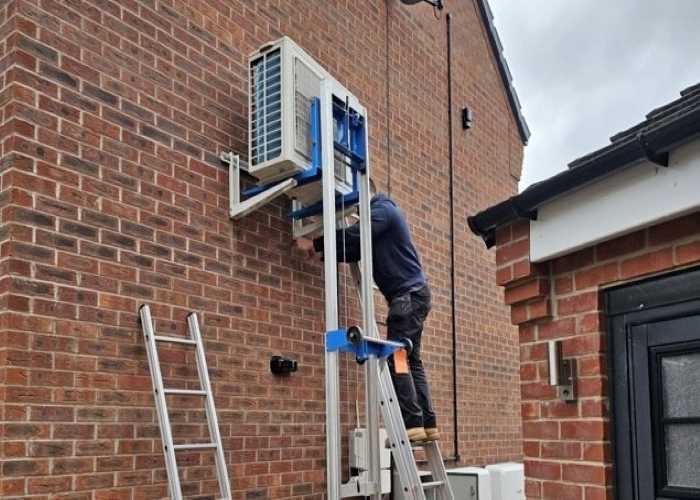Heat pumps are an increasingly popular choice for home temperature control. Offering warmth in winter and cooling in summer, they provide an energy-efficient solution for year-round comfort.
Air source heat pumps are the most common type of system installed in the UK.
Ground source heat pumps are also available, but they’re less common due to higher upfront costs and the space needed for installation.
This guide will focus on the more widely used air source heat pumps and the steps you need to take to have an effective system installed in your home.
There are two main types of air source heat pumps:
Both systems work even when outdoor temperatures are low, making them ideal for the UK’s climate.
Learn more about how these systems work.

A professional survey is essential to ensure your home is suitable for an air source heat pump. The survey will check:
After your home survey, your installer should provide you with a detailed quote. It’s important to review this carefully, making sure you understand all the costs involved.
Your quote should include:
Most air-to-air and air-to-water heat pumps don’t need planning permission, but there are exceptions. If you live in a listed building or a conservation area, or if the unit is particularly large, you may need to check with your local council.
It’s always worth confirming the rules for your area before installation starts.
Before installation begins, you’ll need to prepare your home to ensure your heat pump runs efficiently:

Once your home is ready, a professional will begin the installation. The process typically involves:
After installation, the system will need to be thoroughly tested to ensure it’s running properly. This includes:
Your installer will also show you how to use the system’s controls and adjust settings to get the most out of your heat pump.
In the UK, heat pump installations must comply with building regulations. Installers who are registered with the Building Engineering Services Competence Assessment (BESCA) can self-certify that the installation meets all required standards.
This means you won’t need to involve your local authority, which can save time and money.
Before hiring an installer, make sure they have the necessary qualifications and are part of a scheme that ensures a safe and legal installation.
Heat pumps require minimal maintenance, but it’s important to keep them in good condition to ensure long-term performance:
Looking to install an air source heat pump in your home?
Our team of experienced, TrustMark-registered installers are experts in both air-to-air and air-to-water heat pumps.
And as members of the BESCA Competent Persons Scheme, we ensure that every installation meets UK building regulations.
